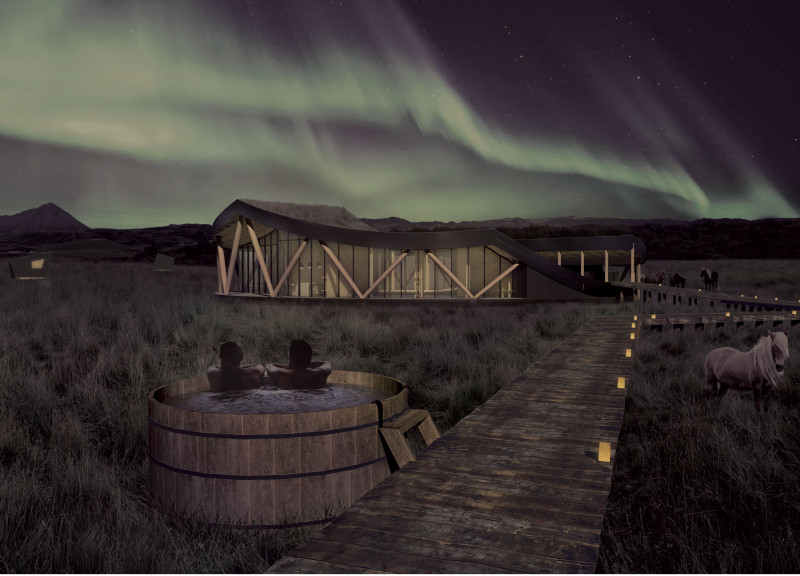5 key facts about this project
The design showcases a clear layout that combines private guest accommodations with communal spaces, all grounded in an environment that encourages relaxation and engagement. The focus is on functionality and user comfort, creating a warm setting that supports various activities. The thoughtful arrangement of diverse zones, such as individual rooms and shared amenities, reflects careful planning.
Spatial Organization
The floorplan divides private guest areas from communal spaces in a logical way. Bedrooms and a host area are at the heart of the design, ensuring personal comfort and privacy. Essential amenities, including bathrooms, sauna, and ample circulation paths, enhance accessibility throughout the building. This organization invites easy movement, enriching the experience for users.
Community Interaction
The design places importance on communal zones, which aim to promote social interaction. Key areas like the kitchen, dining room, and lounge encourage guests to connect. This focus on shared spaces helps develop a sense of community within the design. Additionally, terraces offer places for outdoor relaxation, enhancing the inviting atmosphere.
Material Selections
Materials such as facade wood cladding, insulation, and a wooden structure made up of pillars and walls are integrated into the design. These choices aim to connect the building with its natural surroundings while ensuring durability. The wood cladding not only improves the visual aspect but also emphasizes energy efficiency and environmental responsibility.
Design Elements
The elevations of the structure reveal a multi-dimensional design that maximizes natural light and views. A noteworthy feature is the walkable green roof, which provides both functional and aesthetic benefits. This aspect adds outdoor space that complements the interior areas. Overall, the combination of unique design features illustrates how architecture can blend harmoniously with the environment, reflecting a thoughtful and contemporary approach.


























